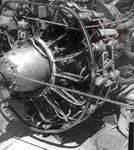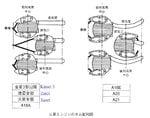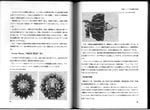- Thread starter
- #101
Navigation
Install the app
How to install the app on iOS
Follow along with the video below to see how to install our site as a web app on your home screen.
Note: This feature may not be available in some browsers.
More options
You are using an out of date browser. It may not display this or other websites correctly.
You should upgrade or use an alternative browser.
You should upgrade or use an alternative browser.
Data Base: Japanese Aircraft Engines
- Thread starter Shinpachi
- Start date
Ad: This forum contains affiliate links to products on Amazon and eBay. More information in Terms and rules
More options
Who Replied?Paidoskixos
Recruit
- 1
- Jun 26, 2011
Hello guys,
I`m a new kid on the block I would ask dearly to Shinpachi to restart this amazing thread. There is so much to be said! Did Hitachi designed any high powered engine? The DB601 descendants (Aichi Kawasaki) had projected developments?
I would ask dearly to Shinpachi to restart this amazing thread. There is so much to be said! Did Hitachi designed any high powered engine? The DB601 descendants (Aichi Kawasaki) had projected developments?
I`m a new kid on the block
- Thread starter
- #105
Thanks Shinpachi!It's an air leading tube to cool the spark plug located behind.
And what about other spark plugs of the 2nd raw cyls? Why they do not have such cooling pipes?
I've never seen such pipes on any of other Sakae engines! Colling of cyl heads with spark plug are provided by deflectors, that were commonly used.
What is the defference in exterior of Sakae 31 21 mods? Do you have other Sakae 31 photos?It looks agry for the Sakae 31.
Question regarding camrods.
While investigating photo I attached to #104 post I did not find cam rods of the 2nd cyl raw in the front side of the engine. So they are to be on the beck side.
I was interested if such construction is common for other Nakajima 2 raw radials? I've found the Ha-109 Homare had camrods of the 2nd cyl raw located on the beck side too.
Such design is more complex then usual for early engines when cam rods of both cyl raws are driven from front side because it needs 2 drive mechanizms on the both sides of engine, while standard early design needs only one on the front side.
But also such design is more effective because cam rods are more straightly at the less angle so they are more tough.
Am I right with conclusion regarding Nakajima cam rods design?
I have picture of Sakae 12 where they are all located at front side, so it should be mistake?
By the way Mitsu came to such design only at its latest engines as it is shown at the pic from Mitsubishi Aeroengines History book
While investigating photo I attached to #104 post I did not find cam rods of the 2nd cyl raw in the front side of the engine. So they are to be on the beck side.
I was interested if such construction is common for other Nakajima 2 raw radials? I've found the Ha-109 Homare had camrods of the 2nd cyl raw located on the beck side too.
Such design is more complex then usual for early engines when cam rods of both cyl raws are driven from front side because it needs 2 drive mechanizms on the both sides of engine, while standard early design needs only one on the front side.
But also such design is more effective because cam rods are more straightly at the less angle so they are more tough.
Am I right with conclusion regarding Nakajima cam rods design?
I have picture of Sakae 12 where they are all located at front side, so it should be mistake?
By the way Mitsu came to such design only at its latest engines as it is shown at the pic from Mitsubishi Aeroengines History book
Attachments
Last edited:
- Thread starter
- #108
In my honest impression, Aurum, I don't think that Nakajima had such a noble conception as you imagine about their radial engines unlike Mitsubishi.
They simply kept standing on P&W's.
The significant difference between Sakae 21 and 31 was the water-methanol injection system.
Model 31 had it but later abandoned as there was little remarkable improvements.
They simply kept standing on P&W's.
The significant difference between Sakae 21 and 31 was the water-methanol injection system.
Model 31 had it but later abandoned as there was little remarkable improvements.
Last edited:
Thanks Shinpachi for reply.In my honest impression, Aurum, I don't think that Nakajima had such a noble conception as you imagine about their radial engines unlike Mitsubishi.
Some times ago I also thought that Mitsubishi engines were more advanced slightly better then Nakajimas'. I based this idea on that fact that other airplane producers such as Aichi Kawanishi installed definitely Mitsubishi engines on their planes, and Kawasaki changed Nakajima Sakae to Mitsubishi Zuisei on Ki-45 (but they left Sakae on Ki-48).
But in fact now I think that Nakajima Mitsubishi engines were almost equal in quality reliability.
And what do you think about this? Is there any evidences regarding reliability and data on working-time resources of Japanese aeroengines?
This is more curious difficult question by the way.They simply kept standing on P&W's.
Nakajima had Gnome-Rhone 14KJRS licensed in early 30-ies. And I am sure that Ha-1 Kotobuki Ha-5/41/109 engines were developed from Gnome-Rhone 14K. Size of cylinders definitely show this.
So there was no P&W infuence to early Nakajima engine design.
But Gnome-Rhone 14K had cam rods driven from the front side of engine I do not know cannot see on the pic. how it was at Ha-5 did it change on Ha-41 (more probable) or on Ha-109 (less).
Besides all I consider Ha-41/109 - the best japanese engine of 1st half of war. I was of long period of developing ought to be mass produced instead of lean Sakae.
Again I did not see evidences that Nakajima borrowed P&W design while been Sakae developing.
Cyl. size is different, Twin Wasp was "square" engine i.e. bore was equal to stroke, but Sakae was not even close to "square"!
Were does such info came from?
And what about other 2nd raw spur plugs, that are without such cooling pipes.The significant difference between Sakae 21 and 31 was the water-methanol injection system.
Model 31 had it but later abandoned as there was little remarkable improvements.
Last edited:
- Thread starter
- #110
- Thread starter
- #111
OK. Japanese wiki explains the Sakae engines -
"(Sakae) is star-shaped air-cooled reciprocating aircraft engines developed and manufactured by Nakajima Aircraft during World War II. The name Sakae was for the navy. The army adopted it as Ha-25, then as 105 and 115. Ha-35 was a joint name with the navy later. Valve drive system was a double row 14-cylinder OHV. Supercharged with a centrifugal supercharger. Design was affected by the Pratt Whitney airplane engines that Nakajima had licensed production.
Americans insist Ha-25 was a copy of Pratt Whitney's 1000HP class engines but it is hard to conclude it as a copy in a word because the diameter of Ha-25 was smaller and redesigned to reduce its air-resistance. However, the parts standard itself is same as Pratt Whitney's. Because of this reason, it can be considered possible that restored Zero fighters are still flying in America today.
33,233 produced. Homare was developed based on Sakae."
Nakajima also had licensed production for the DC-3 aircraft before the war.
Sakae engines were mounted, in place of P&W's, during the war.
"(Sakae) is star-shaped air-cooled reciprocating aircraft engines developed and manufactured by Nakajima Aircraft during World War II. The name Sakae was for the navy. The army adopted it as Ha-25, then as 105 and 115. Ha-35 was a joint name with the navy later. Valve drive system was a double row 14-cylinder OHV. Supercharged with a centrifugal supercharger. Design was affected by the Pratt Whitney airplane engines that Nakajima had licensed production.
Americans insist Ha-25 was a copy of Pratt Whitney's 1000HP class engines but it is hard to conclude it as a copy in a word because the diameter of Ha-25 was smaller and redesigned to reduce its air-resistance. However, the parts standard itself is same as Pratt Whitney's. Because of this reason, it can be considered possible that restored Zero fighters are still flying in America today.
33,233 produced. Homare was developed based on Sakae."
Nakajima also had licensed production for the DC-3 aircraft before the war.
Sakae engines were mounted, in place of P&W's, during the war.
OK. Japanese wiki explains the Sakae engines -...
Hye Shinpachi, thanks for translation of abstract of Japanese wiki article on Sakae. It was quite interesting to compare it with Sakae article in en Wiki. But in fact there is no any other info except well known there.
It would be much usefull if you translate few abstracts from Nakajima Engines History book that you attached here some time ago. Would you be so kind to do this?
As far as I know, Nakajima had only one P&W engine licensed - "Wasp" SINGLE!!! raw engine. It was again "square" engine with bore/stroke = 146/146. So it simply could not be the predecessor of DOUBLE!!! raw Sakae with bore/stroke = 130/150.... Design was affected by the Pratt Whitney airplane engines that Nakajima had licensed production.
And further speculation do not give any evidences of Sakae American origins.
But its amazing, if we look into en.Wiki Sakae article we find:
The engine was designed by Nakajima Aircraft Company after acquiring a license for the French Gnome-Rhone 14K. !!!
This seems is so close to what I expressed in last post. But never the less, I think this is also false, and again has not any proof as American origination is!
Sakae really had very close to P&W "Twin Wasp" engine design which was rather far from Gnome-Rhone 14K. (but early Mitsubishi Kinsei'es 1-3 series were definitely very close to G-R 14K).
I think that really Sakae had similar to P&W "Twin Wasp" in design, but it WAS NOT DERIVATIVE of any of Nakajima licensed engines including American ones.
Even more, Ha-41 Ha-109 that proceeded from G-R 14K of early 30-ies, in late 30-ies obtained features close to P&W double raws right the same way as Sakae did!
I think such meaning is quite different from that it is posted either Jap or EN Wiki articles.
Jalaneese licensed DC-3 = L2D2/3 = were equiped by Mitsubishi Kinsei 43/53 engines but not Sakae.Nakajima also had licensed production for the DC-3 aircraft before the war. Sakae engines were mounted, in place of P&W's, during the war.
Last edited:
- Thread starter
- #113
I'm sorry, Aurum. the Sakae for Japanese DC-3 is my misunderstanding.
It was based on my limited knowledge that Sakae and Wasp were convertible.
I have no enough time for you to translate the Nakajima Engine History as I am very busy officially and privately at the moment.
However, here is a good site about Nakajima engines which was writen by a former Nakajima engineer, Kazutada Okamoto if you are interested.
It would be easier and quicker for you to understand contents with aid of any appropriate translation tool than waiting for my future translation.
I don't know why English wiki and Japanese wiki are so different each other. I may have to doubt our own common sense about our own history.
I have never heard Gnome-Rhone contributed to Nakajima. It could be Bristol Jupiter at least in its description.
Also, I have ever read in somewhere that Nakajima was hard to modify western engines once Nakajima purchased production license.
There were two reasons - one was to develope better engines as their own. The other was to evade royalty.
I heard there was, in fact, such a conflict about royalty between Nakajima and P&W then.
It was based on my limited knowledge that Sakae and Wasp were convertible.
I have no enough time for you to translate the Nakajima Engine History as I am very busy officially and privately at the moment.
However, here is a good site about Nakajima engines which was writen by a former Nakajima engineer, Kazutada Okamoto if you are interested.
It would be easier and quicker for you to understand contents with aid of any appropriate translation tool than waiting for my future translation.
I don't know why English wiki and Japanese wiki are so different each other. I may have to doubt our own common sense about our own history.
I have never heard Gnome-Rhone contributed to Nakajima. It could be Bristol Jupiter at least in its description.
Also, I have ever read in somewhere that Nakajima was hard to modify western engines once Nakajima purchased production license.
There were two reasons - one was to develope better engines as their own. The other was to evade royalty.
I heard there was, in fact, such a conflict about royalty between Nakajima and P&W then.
Thats really sorrow. If you could translate at least an indent in a week, I think all that book could be translated already since you posted it.I have no enough time for you to translate the Nakajima Engine History as I am very busy officially and privately at the moment.
Thanks for link. I will try to understand something there.However, here is a good site about Nakajima engines which was writen by a former Nakajima engineer, Kazutada Okamoto if you are interested.
It would be easier and quicker for you to understand contents with aid of any appropriate translation tool than waiting for my future translation.
Besides all GregP also expressed this idea at neighbor thread and I argued with him there.I don't know why English wiki and Japanese wiki are so different each other. I may have to doubt our own common sense about our own history.
Just for information, the Sakae 21 was designed (after acquiring a license for the Feench Gnome-Ghone) by Nakajima...
Shame on you dear Shinpachi. Its in Nakajima engines history book. So lets see attachment here.I have never heard Gnome-Rhone contributed to Nakajima. It could be Bristol Jupiter at least in its description.
Of course its easier to modify the own design then someother for all. And Nakajima quite successfully developed its native Ha-5/41/109 Sakae/Homare engine series.Also, I have ever read in somewhere that Nakajima was hard to modify western engines once Nakajima purchased production license. There were two reasons - one was to develope better engines as their own...
Attachments
- Thread starter
- #115
And what does it say?Does it say Gnome-Rhone influenced Nakajima?
I consider that cyl diameter Nakajima borrowed from G-R stroke was rounded to 16 cm
- Thread starter
- #117
It says Nakajima's first double row radial engine NAL was completed in 1933.
The Gnome-Rhone came to Nakajima in 1935 as a technical reference to be compared with NAL.
Gnome-Rhone sample was a copy of Bristol Jupiter, so it could have made little sense for Nakajima as
Nakajima had been familiar with Bristol Jupiter.
This is from other pages,
Bristol Jupiter was an artwork which was not suitable for mass production Nakajima wanted.
American engines, like Wright or P&W, were good for their purpose.
The Gnome-Rhone came to Nakajima in 1935 as a technical reference to be compared with NAL.
Gnome-Rhone sample was a copy of Bristol Jupiter, so it could have made little sense for Nakajima as
Nakajima had been familiar with Bristol Jupiter.
This is from other pages,
Bristol Jupiter was an artwork which was not suitable for mass production Nakajima wanted.
American engines, like Wright or P&W, were good for their purpose.
Last edited:
razor1uk
Staff Sergeant
Some nice info, musings and reasonings there guys  goodluck to on all
goodluck to on all 
 I think I'm a bit of a petrolhead...
I think I'm a bit of a petrolhead...
- Thread starter
- #119
Thanks for translation Shinpachi.It says Nakajima's first double row radial engine NAL was completed in 1933.
The Gnome-Rhone came to Nakajima in 1935 as a technical reference to be compared with NAL.
But is it definitely so that Nakajima's first double row radial engine NAL was completed in 1933?
For ex. in the table from the Naka book its stated 1937 data regarding NAL - Ha-5. And its look like truth because in mid 30-ies non of the japaneese plane was equiped by 2-raw radial either Naka or Mitsu. Seems to me there Ki-19, Ki-21 G3M were the first?
2-raw radial G-N K-14 was absolutely different from Bristol Jupiter engine. It was exactly G-N but not Bristol design. So I cannot understand what can be a correspondence between them.Gnome-Rhone sample was a copy of Bristol Jupiter, so it could have made little sense for Nakajima as
Nakajima had been familiar with Bristol Jupiter.
Yes its quite true Jupiter was quite troubled in production, never the less it was the most mass engine produced all over the world in early 30-ies. And the same Naka made them allot - 600 pieces in 6 years (according the table from Naka book).This is from other pages, Bristol Jupiter was an artwork which was not suitable for mass production Nakajima wanted. American engines, like Wright or P&W, were good for their purpose.
So seems its clear that bore 146 mm was inherited by Naka from Jupiter and was repeated in Ha-1 Kotoburi or Ha-5/41/109 either.
Then they cutted stroke from 190 to 160 mm that Ha-1 Kotobuki successors already had.
But what was the origin of Naka engine construction stays unclear. Either it was some american prototipe or it was independent. In both cases it was advanced then Mitsu had at that time (in case of pushrod arrangement at least)
Last edited:
Users who are viewing this thread
Total: 1 (members: 0, guests: 1)



